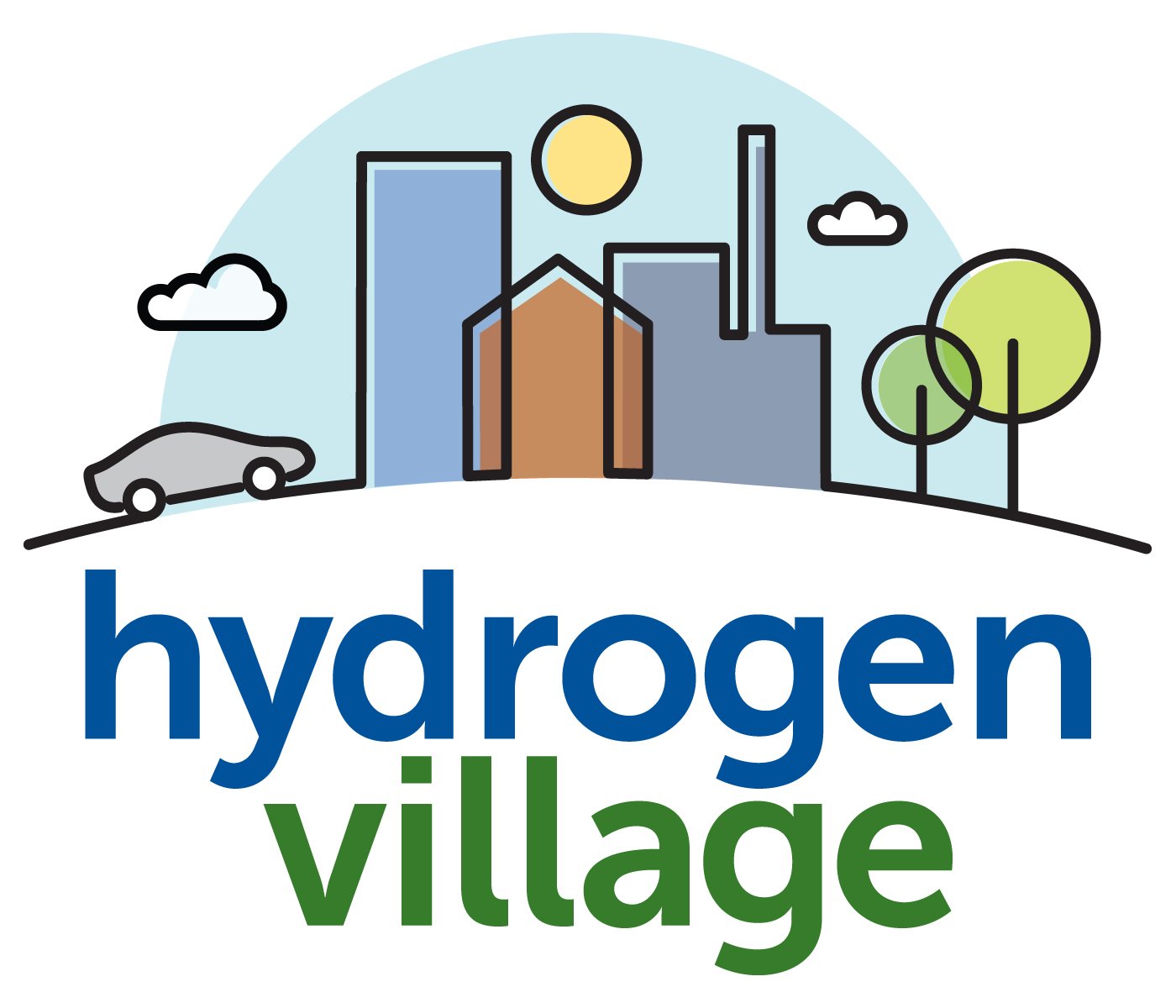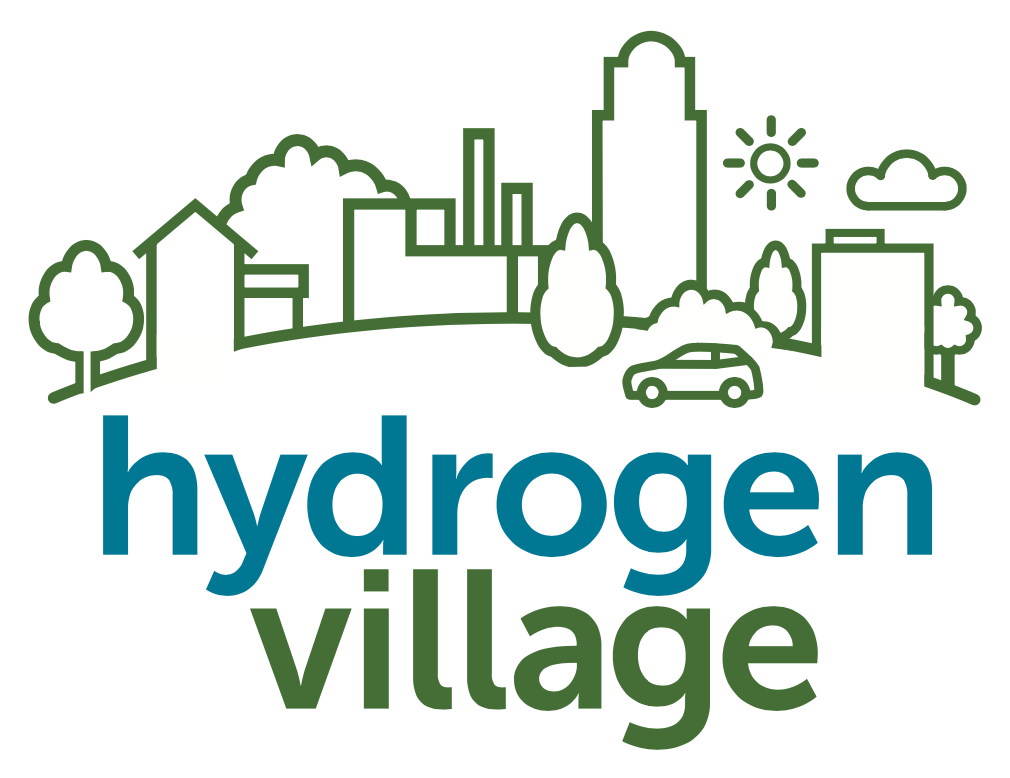Power
Hydrogen can be synthesized from electricity and water - a process called electrolysis. High school teachers often demonstrate electrolysis using simple, tabletop equipment. Electrical energy (voltage) is applied to water, separating it into hydrogen and oxygen gases. Industrial scale electrolysis has been a common means of producing hydrogen for manufacturing applications for many decades, usually where there are ample supplies of low-cost electricity.
But how does this help to decarbonize power systems? One of the challenges with passive, renewable power generation, say, from wind turbines or solar photovoltaic arrays, is that they can only feed green power onto the grid at the rate it is consumed by power users. Electrolysis enables energy from surplus generating capacity to be stored in hydrogen. As hydrogen, this energy can be stored indefinitely and it can be mobilized for transport. When and where needed, energy stored in the hydrogen can can be converted back into electrical voltage by reversing the electrolysis process using a fuel cell (i.e., recombining hydrogen and oxygen to produce water and generate power), or simply by combusting the hydrogen as a fuel in an engine-based generator. The hydrogen can also be used in non-power applications, such as for space heating or industrial process heat, or as chemical feedstock for manufacturing purposes.
Hydrogen can thus help wind and solar farms to operate more productively. It can also help with constant baseload power supply, such as from nuclear power plants. Wherever electrical power supply is mismatched with demand, hydrogen can serve as a buffering medium that enables more flexible balancing. Hydrogen is also a bridge between electricity and other energy commodities, which is why it is sometimes called an electrofuel.
There are two primary electrolytic processes that can produce hydrogen: PEM electrolysis and alkaline electrolysis, both of which use an anode and a cathode.
When using a PEM, water at the anode reacts to produce oxygen and hydrogen ions (or protons), at which point the hydrogen ions move across the membrane to the cathode. The electrons flow through an external circuit, ultimately combining with the hydrogen ions to form hydrogen gas. Anode and cathode reactions are both shown below:
Anode Reaction: 2H2O → O2 + 4H+ + 4e-
Cathode Reaction: 4H+ + 4e- → 2H2
Alkaline electrolysis is a technology that has been used for many decades. It differs from PEM in that it uses a liquid alkaline solution of sodium or potassium hydroxide as the electrolyte “membrane”. Water and the electrons react at the cathode to form hydroxide ions and hydrogen. The hydroxide ions are transported through the electrolyte to the anode, where they combine and give up excess electrons to produce water, electrons, and oxygen. Anode and cathode reactions are both shown below:
Anode Reaction: 4OH- → 2H2O + 4e- + O2
Cathode Reaction: 4H2O + 4e- → 4OH- + 4H+ + 2H2
Examples of hydrogen in power applications
Glencore RAGLAN Mine Renewable Electricity Smart-Grid Pilot
Ramea Island Wind Power-to-Gas Hydrogen Installation – 2008-2020
This project involved the installation of an electrolysis plant to store energy from an island community’s wind farm. Ramea Island lies off the south coast of mainland Newfoundland and Labrador, and is home to several hundred people. Historically, diesel generators operated by Nalcor Energy provide power to the community. This initiative demonstrated the potential to transition the community from diesel to renewable energy, and represents the first Power-to-Gas system operating in Canada. The hydrogen produced by the electrolysis plant was used by a set of five hydrogen-fueled gensets to supplement the power output of the wind turbines. The equipment deployed included:
One HySTAT-30 electrolyzer unit, manufactured by Hydrogenics and “marine hardened” by CES, producing hydrogen gas at a rate of approximately 20 cubic meters per hour
Approximately 84,000 litres of water storage
120 kg of ground storage for compressed hydrogen
Five hydrogen-fueled internal combustion engine power generators, each rated at 65-kW, comprising the 250-kW hydrogen power plant
The installation was owned by Naclor Energy and Change Energy Services (of Oakville, Ontario) was the engineering firm retained to design the integrated energy system.
Hydrogen Vehicle Refuelling & Energy Systems — Change Energy Services
Glencore RAGLAN Mine Renewable Electricity Smart-Grid Pilot
This project involved the erection of three actic-class wind turbines on the northern shores of Quebec in Nunavik to supply power to the RAGLAN nickel mining complex, which is operated by Glencore Canada and is too remote for grid supplied power. Electrical energy from the turbines is accumulated as hydrogen using a PEM electrolysis plant, and is later dispatched to the mine as electricity, using a fuel cell. The hydrogen system has contributed to achieving 97% utilization of the turbines’ output potential, displacing diesel that would otherwise be used to generate power for the mine.
The system was designed and installed by TUGLIQ Energy (of Montreal, Quebec).
Glencore RAGLAN Mine Renewable Electricity Smart-Grid Pilot Demonstration (nrcan.gc.ca)
Project Completion Report - demonstrations (tugliq.com)
Power-to-Gas, Markham
Operating as a joint venture between Enbridge Gas and Cummins, a grid-scale PEM electrolysis plant takes up to 2.5 MW of power direct from Ontario’s power grid to produce hydrogen. This Power-to-Gas facility is operated by the provincial grid authority (the Independent Electricity System Operator, IESO) as a ramping, flexible load that can provide various grid services, such as frequency and voltage regulation, which help to improve the quality and stability of local power supply. Hydrogen is thus a valuable byproduct of grid services and is a form of grid energy storage. Plans are under development to take some of this hydrogen and blend it into the natural gas supplied to customers through the local pipeline network. Since the hydrogen is made from Ontario grid power, it is very low in carbon-intensity; blending it into natural gas helps to decarbonize the fuel, which is used to heat buildings and industrial processes.


